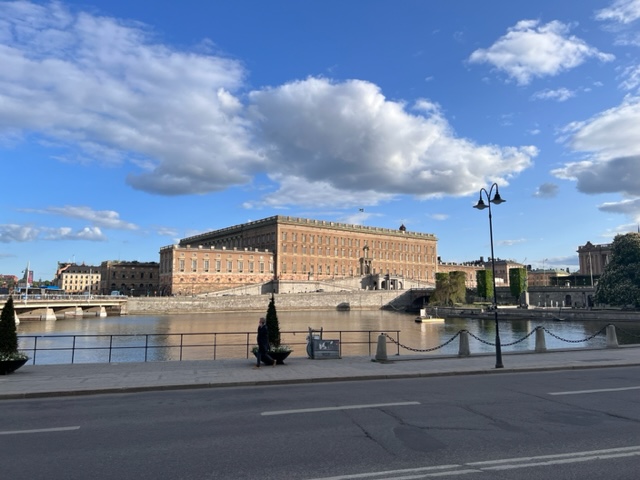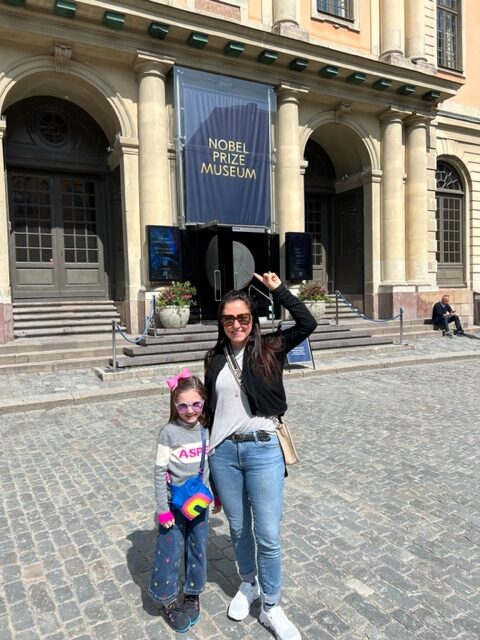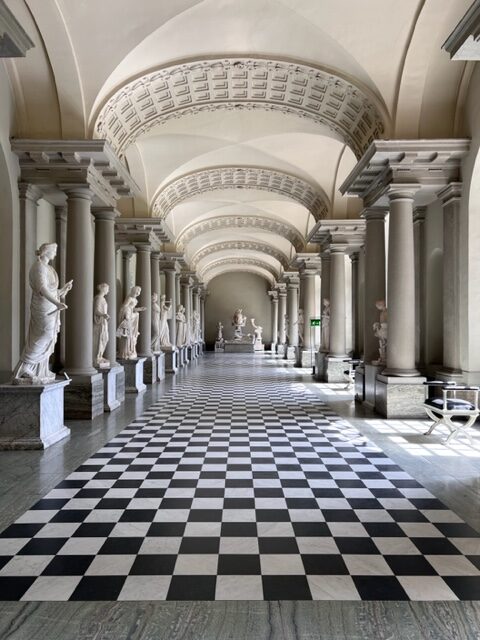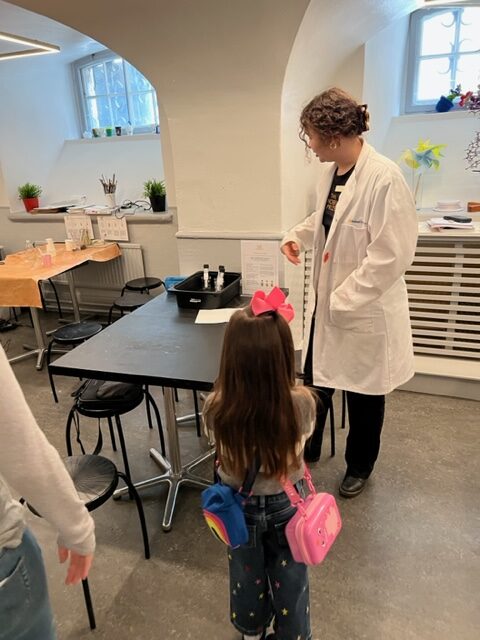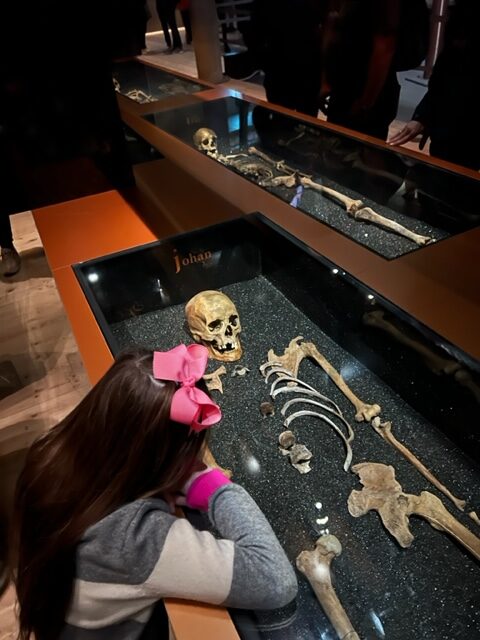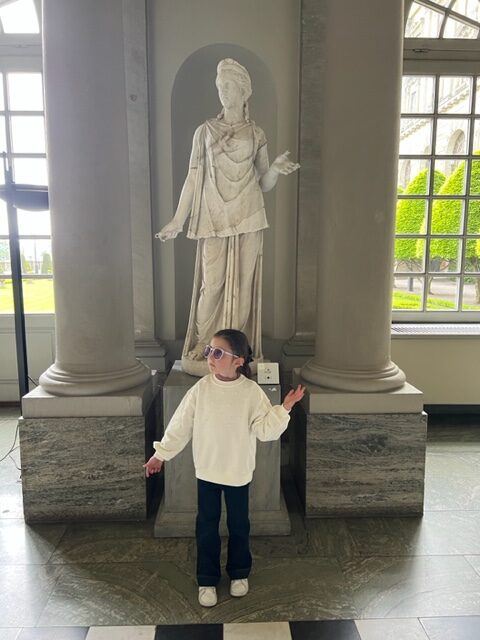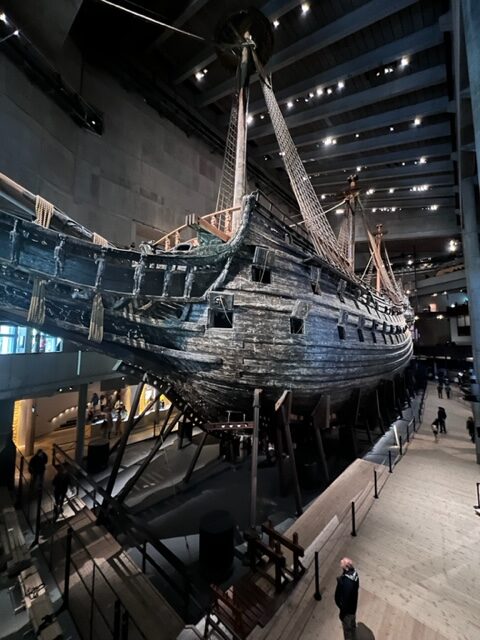Stockholm’s Many Museums
Stockholm has so many museums! And on top of that, the city itself is practically a museum, considering the well preserved old town (The Gamla Stan) and the impressive, fifteenth-century Royal Palace. Stockholm has never been bombed in war, unlike so many of its European neighbors, and seeing its picturesque, timeless buildings made me wonder yet again what London or Frankfurt would look like if world wars hadn’t ravaged their historical centers.
Aside from the ABBA Museum, the museums that were at the top of our list for Stockholm were the Vasa, the Nobel, and Gustav III’s Museum of Antiquities. We hit all of them the third day we were in Stockholm, and they were all awesome. I’ll share what we learned and felt about each one.
- The Vasa Museum –
Before we went to Sweden, we reached out to our old student/good friend Johan, whose father is Swedish to the core, and asked what we should do and eat in Stockholm. (More on the eating later…) The Vasa Museum was at the top of his list of must-see attractions, but he warned us that the Vasa itself was something of an embarrassment for the Swedes. We soon learned why.
The Vasa was a ship that set sail in March of 1628. Phenomenally elaborate, intricately carved, and gigantic, the Vasa was intended to be a symbol of the Swedish navy’s glory. When constructed, the ship glowed with vibrant paint, showing depictions of the Swedish royal family. It carried a record-breaking 64 bronze cannons, enough to instill terror in the heart of every Dane who dared approach it (Sweden and Denmark are eternal enemies, FYI). Truly, the Vasa would have been a crowning achievement for any monarch, and certainly for any shipbuilder. Except that it wasn’t seaworthy…It was only designed for 32 cannons, but hubris got the better of men, who went with the “more is more” approach.
The Vasa sank within minutes of its maiden launch, killing about thirty passengers and shocking the crowd that stood on the shore. However, because of the peculiar, oxygen-poor chemistry of the Baltic, there were few worms and pests to consume the wreckage, so the Vasa avoided the fate of most wooden ships that rest on the bottom of the sea.
Today, you can visit the Vasa, which was hauled from the sea about fifty years ago, in a museum built especially to house its corpse. In addition to the massive structure of the boat itself, there are skeletons on view, which enjoyed the same preservation as the Vasa. Archaeologists have done an excellent/horrific job of reconstructing what they imagine the skeletons would have looked like during their heyday, and wax mock-ups of those unfortunate souls line the bottom floor of the museum.
Josephine wasn’t as into the Vasa as I expected. She mainly liked the skeletons. Maybe that’s because it was just a colossal boat, while the skeletons were real, ghoulish bones. But I think it was because we had the crappiest guide ever.
While I normally line up a guide in each locale based on extensive research, I don’t always have time to expend that effort. I have had success all over the world with companies that match area guides with tourists looking for expert insight. I’ve used Tours by Locals; I’ve used Get Your Guide; I’ve used Viator. They’ve all produced decent guides; some better than others. Well, this time, Get Your Guide did me wrong. We got the biggest dingbat tour guide on record. She didn’t tell us one thing of interest. She didn’t know any details about the Vasa or about its origins. She took us to the museum and had us watch the museum’s film about the ship! That was a first for me.
Thankfully, Josephine fell and skinned her knee shortly after the visit to the Vasa, so we cut the tour short. Yes, I’m thankful for an injury…
So the lesson here is, do your research. Find a good guide. Otherwise, you’ll want to gouge out your own eyes.
- The Nobel Prize Museum
Wow. Alfred Nobel. What a dude. Made an incalculable fortune in dynamite. Had no children. Left pretty much all he’d ever made to create the Nobel Prize. It’s hard to imagine how much good has been prompted by the quest for that accolade and how much has been celebrated by its award.
The Nobel Prize Museum was a bit less grand than the name might first insinuate, but it’s still eminently charming. It’s in a stately old building, formerly the stock exchange, located on a beautiful square in the Gamla Stan (the Old Town). Inside, you’ll find all manner of artifacts from past Nobel laureates. I didn’t take pictures of anything, and now I’m regretful of that because there are cool tidbits about such towering figures as Marie Curie, Watson & Crick, Malala, etc. There are also movies about lesser known laureates and interactive stations to learn more about their accomplishments.
Josephine wasn’t super jazzed about the exhibits. She likes the idea of science, but she still thinks it’s just mixing liquids together and making explosions. She likes literature, but we’re not to Nobel Prize winning stories just yet. She likes peace… Anyway, it wasn’t her jam until we found the kids’ sections of the museum. They have a little theater, where she created a puppet show, and they had a science section where she got to smell different chemicals and rank them in order of preference. Overall, it was a really fun stop. She could have spent more time than we allowed her. I’m not sure it’s an A+ experience for every child, but it was perfect for our girl, who needs just a pinprick of stimulation to let her imagination run wild.
- Gustav III’s Museum of Antiquities
Anyone who really knows me knows of my deep, abiding love of all things ancient. It turns out, King Gustav III of Sweden shared that love! He was King in the latter half of the eighteenth century, not long after Italian would-be archaeologists started digging in earnest at Pompeii (that began in 1748).
On a tour of Rome in 1784, Gustav III became enamored of the marbles in the Vatican, and he set out to accumulate his own collection of ancient sculptures. By the time of his assassination in 1792, Gustav had acquired all manner of sculptures, including busts of Roman emperors, like Tiberius and Nero, and other important figures, like Brutus and Lepidus. I’m sure the busts have been compared with other representations of those historical luminaries, so they’re likely accurate, but I also imagine Gustav would have been an easy guy to fool. He was pretty obsessed, so much so that he traveled around Europe in disguise, seeking out sculptures as the Count of Haga, rather than as the King of Sweden. Crazy.
I love looking at ancient busts, whether they are assigned the proper identities or not. I just like seeing a millennia-old visage and staring into its eyes. So that hall of busts was pretty great for me.
Josephine was more interested in the Gallery of Muses, which has statutes of all nine muses. Forget the fact that they’re likely not statues of muses, but rather a hodgepodge of muse-y looking statues. The hall itself is quite impressive in its black-and-white starkness. It’s quiet and relaxing. I’m sure Gustav harbored great plans of kicking back with a glass of wine and musing over his muses. Sadly, he died of a gunshot wound inflicted at a masquerade ball. Shortly after his death, Gustav’s glorious gallery was opened to the public, becoming Sweden’s first public art museum. Would Gustav have approved? We’ll never know.
Author: Jessica Givens
